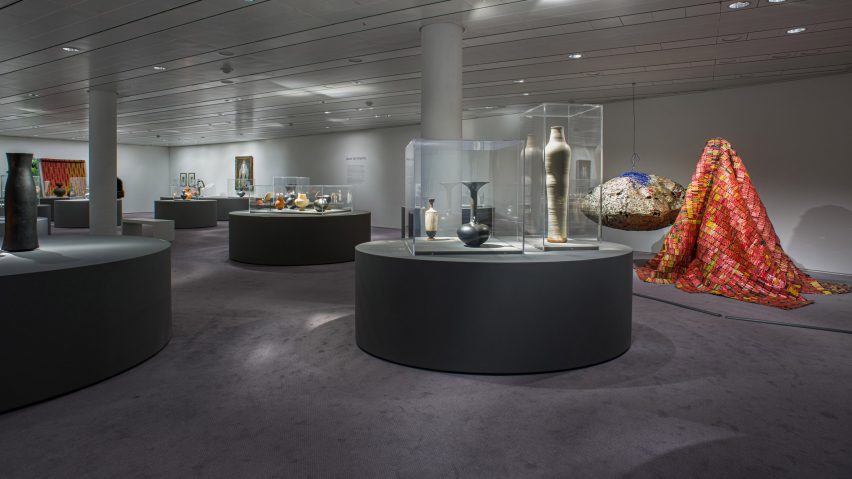
David Adjaye designs Magdalene Odundo ceramics exhibition at the Sainsbury Centre
David Adjaye has designed an exhibition of ceramicist Magdalene Odundo's work at the Norman Foster-designed Sainsbury Centre for Visual Arts in Norwich.
The British architect's studio Adjaye Associates was responsible for the design and layout of Magdalene Odundo: The Journey of Things, an exhibition at the high-tech gallery that opened last weekend.
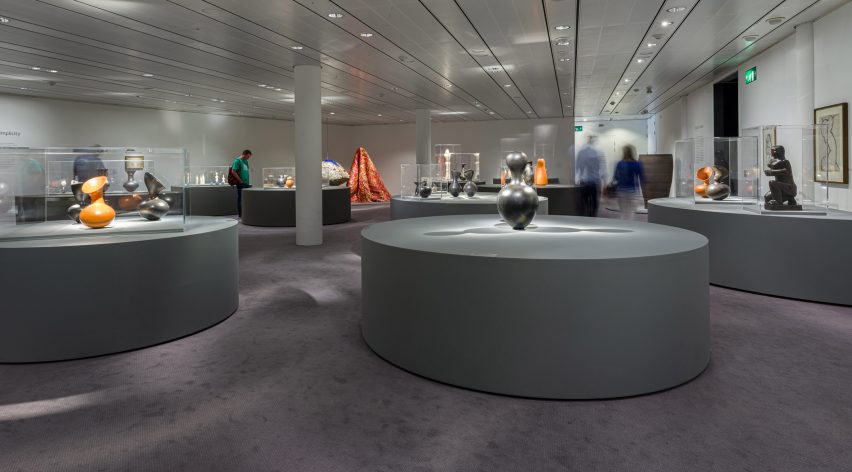
A series of ovoid, round and semi-circular plinths in various shades of grey have been arranged in the six interconnected spaces that house the exhibition.
"The concept inspiration is derived from an archipelago, a cluster of objects found within an open space," Adjaye told Dezeen. "Although scattered there is still an inherent grouping, a family of plinths that allow the visitor the opportunity to weave in-between and explore the exhibition."
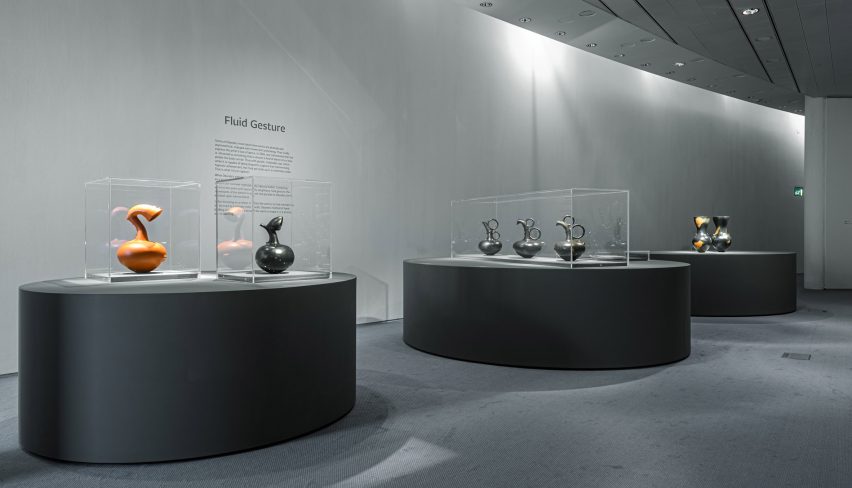
The plinths are topped with simple glass cases housing the Kenyan-both ceramicist's work.
"To relate to the formal qualities of Magdalene's work I drew upon the idea of the soft natural forms of pebbles, the idea being to create this non-linear journey through the exhibition," explained Adjaye.
"The plinths take on this natural irregularity both in shape and position and using a tonal variation of subtle hues of warm to cool grey helps to complete this natural, geological concept," he continued.
"We wanted to let the surrounding space drop away and bring the focus to the plinths and their pieces."
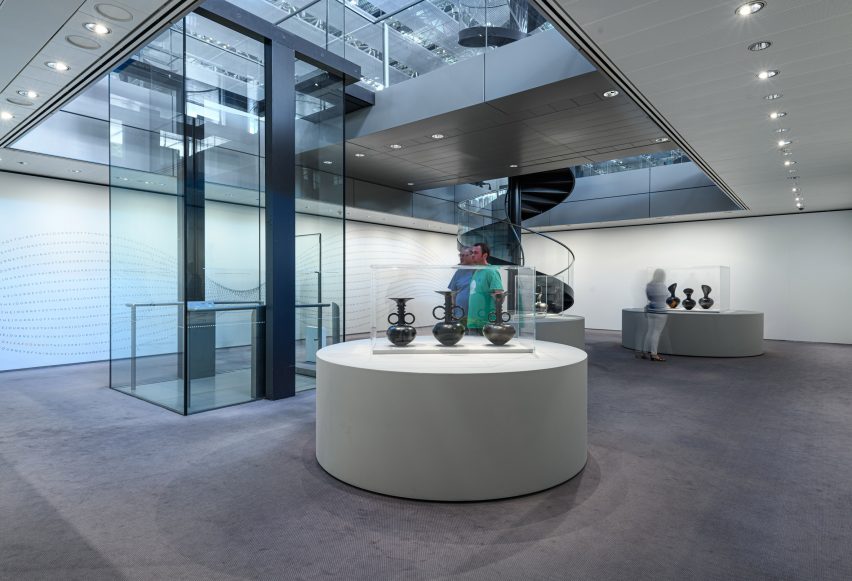
Interspersed with more than 50 pieces of Odundo's work are a selection of objects chosen by the artist from around the world. More than 30 of these objects are taken from the Sainsbury Centre's permanent collection.
The exhibition design is intended to create "a balance between Magdalene's work and the eclectic array of other objects within the exhibition", while at the same time telling the artist's story.
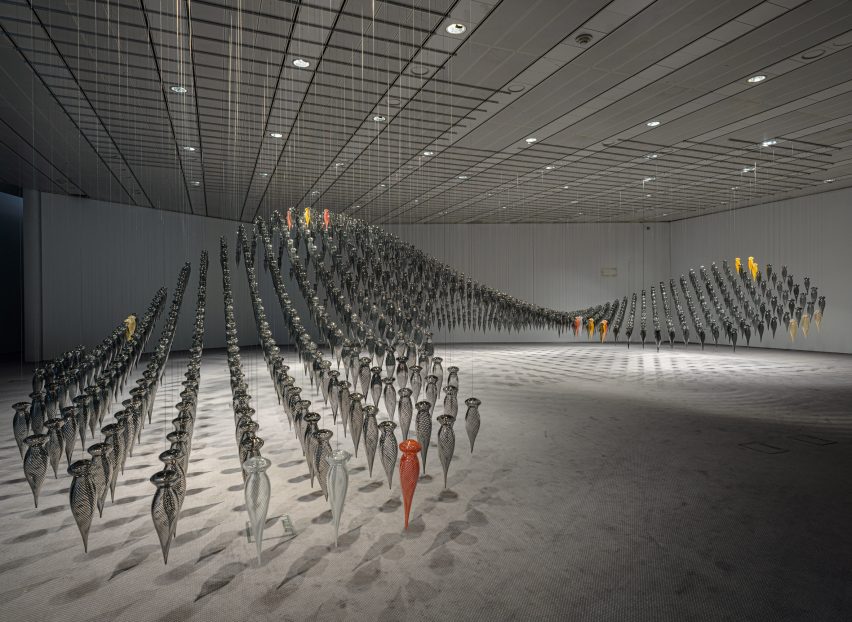
"Magdalene's exhibition tells the story of the journey she's been on so far with her work, a discovery through history and cultural heritage," said Adjaye.
"The design needed to be independent of the interior architecture and create an intriguing display landscape, with the objects arranged in interrelated sections so that you can promote a non-linear narrative that engages with her story."
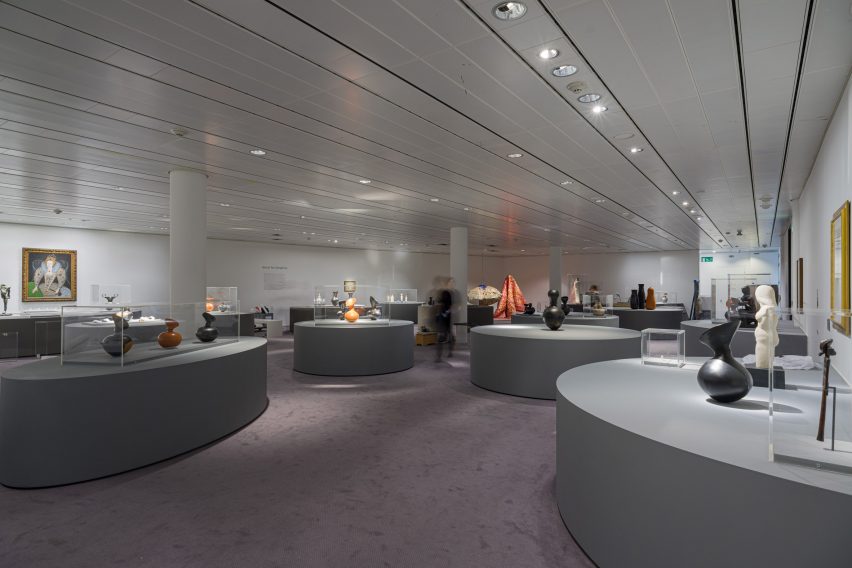
The exhibition includes Transition II, the ceramicist's largest work — a site-specific installation made up of 1,001 individual suspended glass pieces. The work is redesigned according to its specific site, each time that it is shown.
The show at the Sainsbury Centre follows a run at the Hepworth Museum in Wakefield, that was designed by architect Farshid Moussavi.
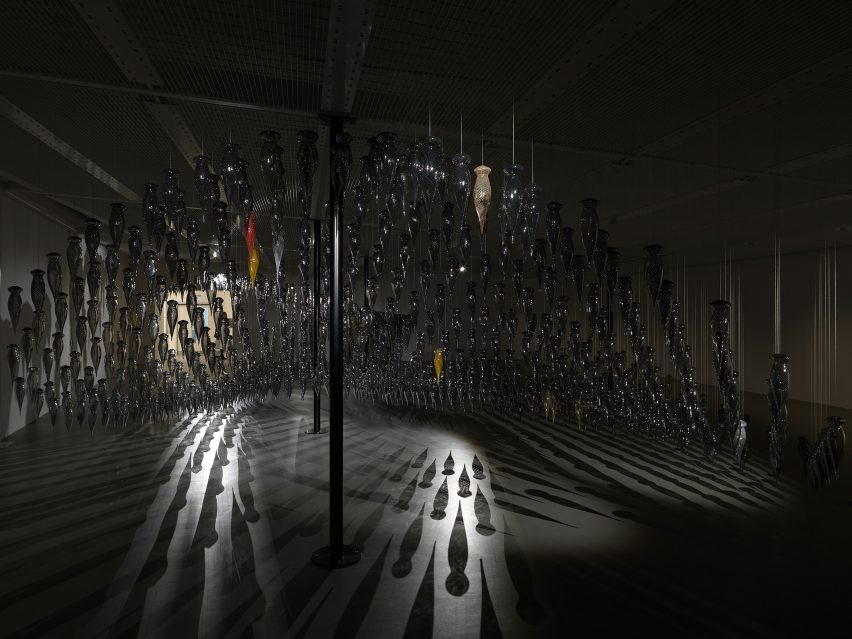
The Sainsbury Centre for Visual Arts was the first major public building designed by architect Norman Foster of Foster + Partners.
Situated on the University of East Anglia campus on the outskirts of Norwich, the public gallery opened in 1978 to house the collection donated by the Sainsbury family.
The design for The Tulip, a tower by Foster + Partners planned for the City of London, was recently rejected by the mayor of London, Sadiq Khan. The mayor felt that the tower, with its viewing platform and gondola ride attraction was of limited public benefit.
Photos by Andy Crouch unless otherwise stated. Images courtesy The Sainsbury Centre for Visual Arts.